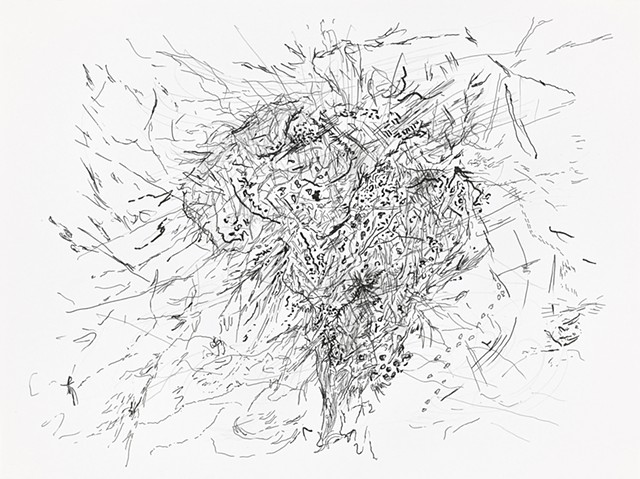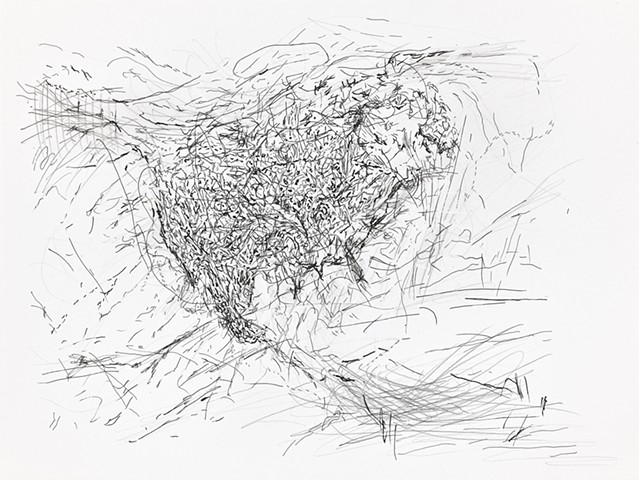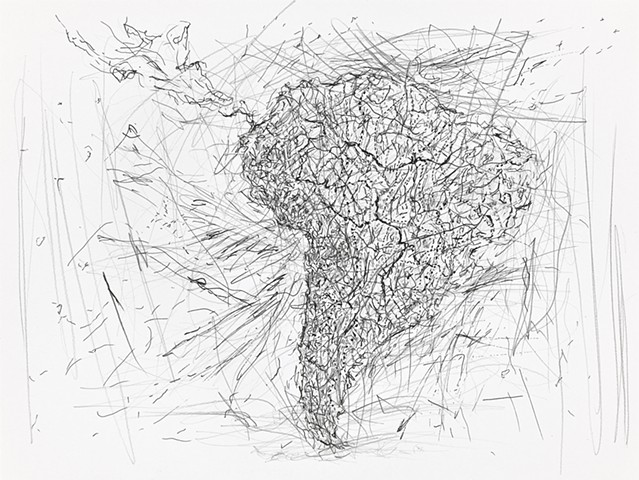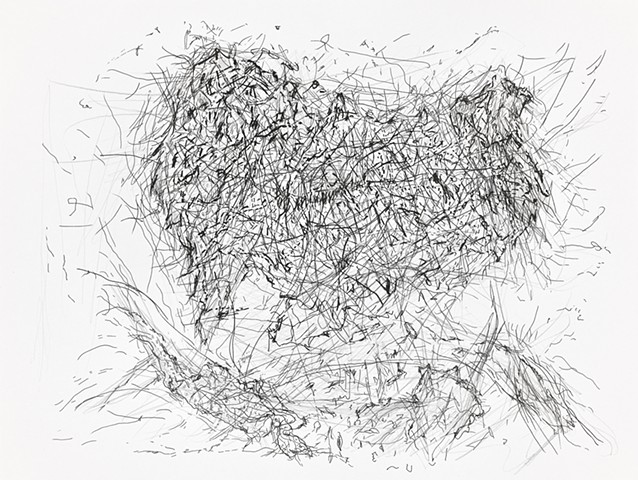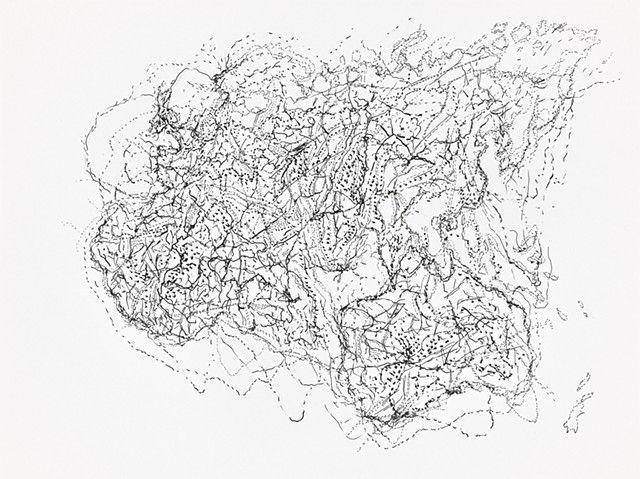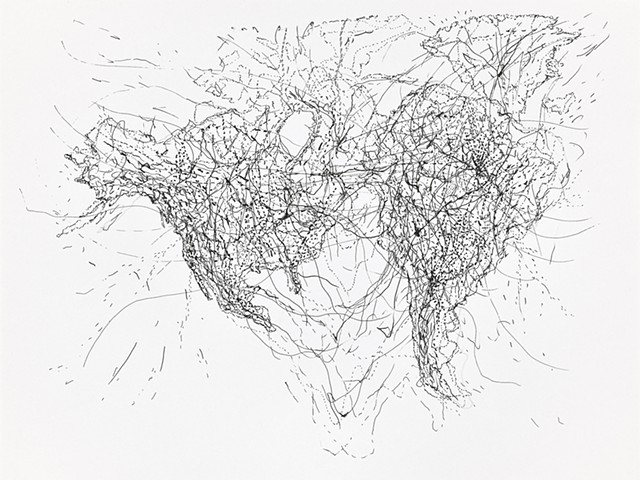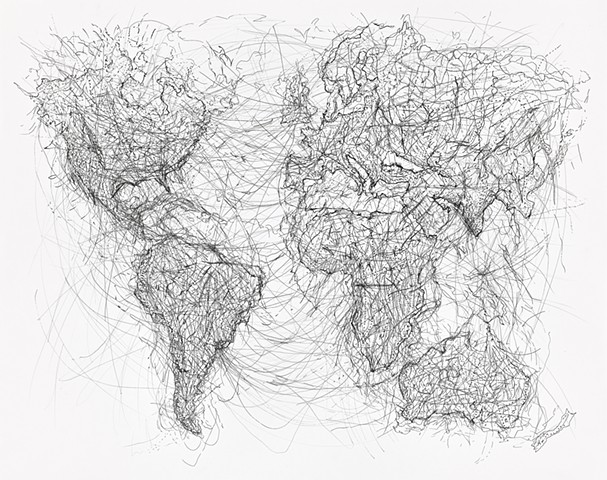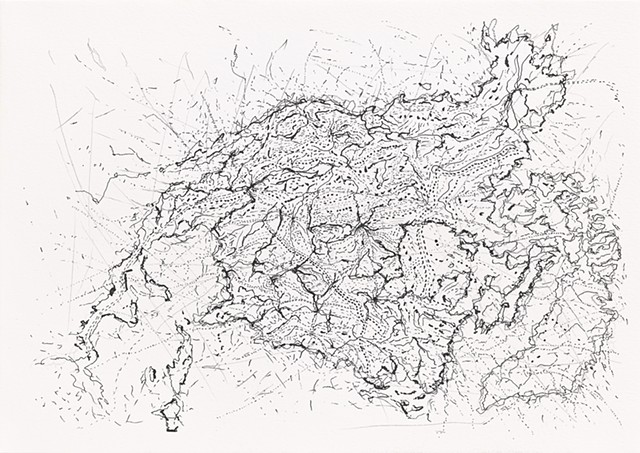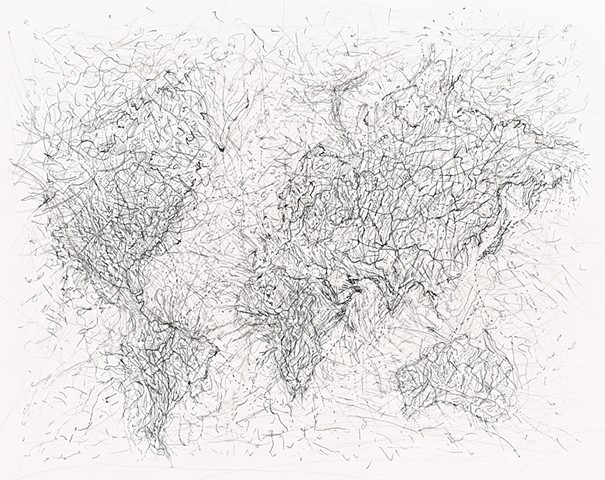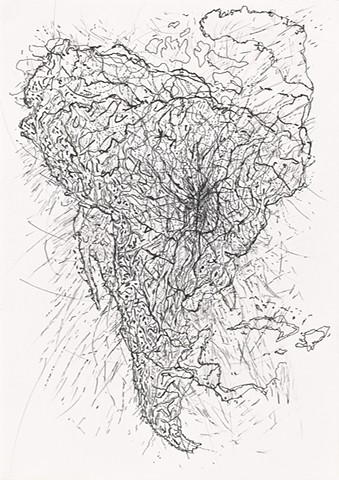Border(less)
Border(less)
My exploration of borders extends far beyond fixed geographical or political lines, venturing into fluid, imaginative realms shaped by history, experience, and the limits of perception. In Border(less), I investigate the concept of borders as fictional, mutable constructs, drawing on critical cartography and experimental mapping to challenge our assumptions about space and division. Maps, in my work, become human documents—records of negotiation and imagination rather than mere representations of territory. Here, boundaries are never absolute but shift and dissolve, shaped by context, movement, and memory.
During the height of the pandemic, I returned to drawing as a daily practice. This resulted in a series of works that interpret the border as an indeterminate and dynamic space, rendered through gestural marks and accumulations of lines that resist a single, definitive edge. These drawings, both spontaneous and considered, become visual meditations on the transient and evolving nature of boundaries—whether between nations, ideas, or even between self and other.
In Border(less), the tangible intertwines with the abstract. My process blends historical research with intuitive mark-making, creating maps that embody both the rhythmic pulse of drawing and the layered histories embedded within cartographic forms. Through this synthesis of material and concept, I seek to unfold a more expansive understanding of borders—one that acknowledges their profound impact on human experience, while also highlighting their inherent instability and artifice.
This project invites viewers into a space where reality and fiction coexist, and where the narratives of borders are revealed as deeply human stories. By reimagining maps and boundaries, Border(less) encourages a reconsideration of how we perceive, construct, and move through the world—illuminating the complex, ever-changing landscapes that define and connect us all.
